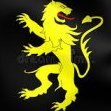-
Posts
1,055 -
Joined
-
Last visited
Werdna's Achievements

Very Obsessed Member (5/9)
2.9k


2.9k

Werdna replied to jackroadkill's topic in Ready for Inspection - Aircraft

Werdna replied to Kov1985's topic in Ready for Inspection - Aircraft

Werdna replied to Peter Roberts's topic in Aircraft WWII

Werdna replied to Peter Roberts's topic in Aircraft WWII

Werdna replied to Peter Roberts's topic in Aircraft WWII

Werdna replied to Peter Roberts's topic in Aircraft WWII

Werdna replied to Peter Roberts's topic in Aircraft WWII

Werdna replied to Peter Roberts's topic in Aircraft WWII